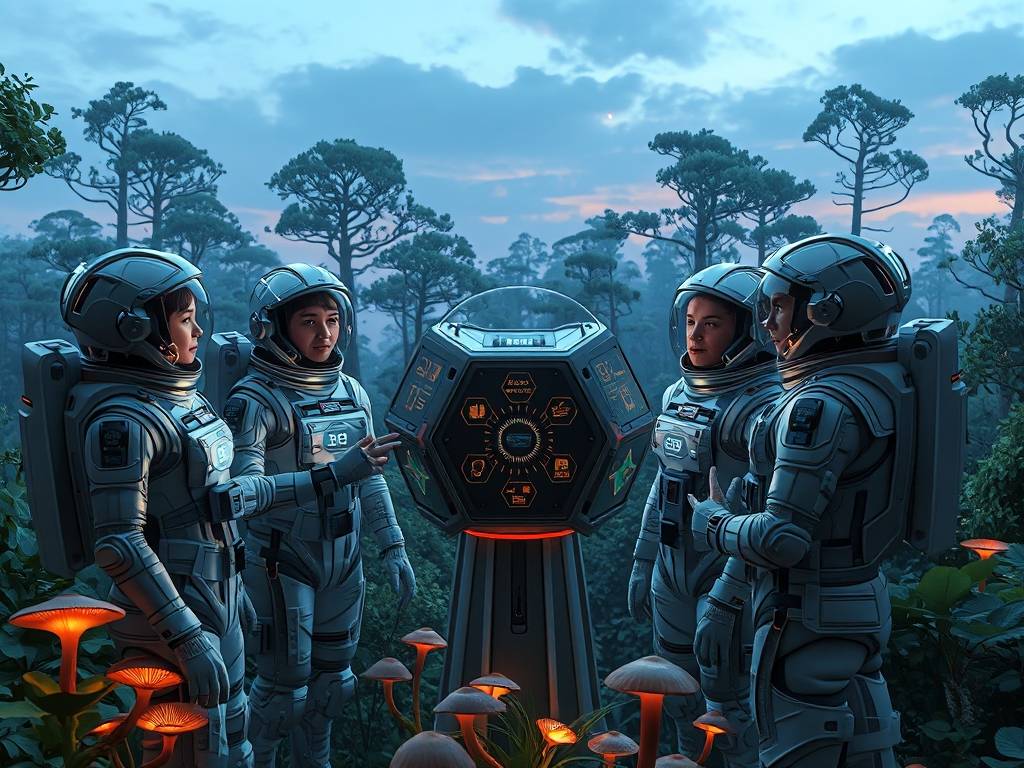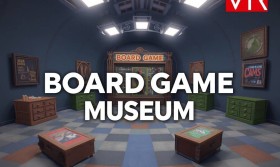Title: Beyond Battlefields: How Peace Simulator VR's 'Harmony Missions' Update is Redefining Virtual Reality

For decades, the virtual reality landscape has been dominated by a familiar refrain: the crackle of gunfire, the roar of engines, the adrenaline-pumping thrill of combat. From military shooters to fantasy brawls, VR has excelled at simulating conflict. But what if the greatest challenge a headset could offer wasn't to defeat an enemy, but to understand them? What if the ultimate objective wasn't victory, but harmony? This is the revolutionary question at the heart of Peace Simulator VR, and its latest, groundbreaking update, "Harmony Missions," is a bold and profound answer.
The core game, launched last year, established a novel premise. Instead of a weapon, players were equipped with a "Diplomacy Tool," a device capable of translating languages, analyzing emotional states, and highlighting points of cultural connection. The initial environments—a tense interstellar trade hub and a resource-scarce valley with two feuding villages—were designed not as arenas, but as intricate social puzzles. The "Harmony Missions" update expands this vision exponentially, moving from proving a concept to delivering a deeply nuanced and emotionally resonant experience.

Deconstructing Diplomacy: The Three Pillars of the Update
The update introduces three entirely new mission archetypes, each focusing on a different facet of peace-building.
1. The Architectural Accord: This mission type transforms players into facilitators of literal and metaphorical bridge-building. Set in the new "Canyon of Whispers" map, two communities have lived on opposite cliffs for generations, their only interaction being shouted accusations across the divide. The player's task is not to design the bridge themselves, but to manage the collaborative process. Using the upgraded Diplomacy Tool, you must mediate design meetings, translate technical jargon from both sides, identify shared aesthetic values, and help navigate logistical disagreements. The profound payoff comes not in a cutscene, but when you physically walk across the finished bridge—constructed from a blend of both cultures' architectural styles—as the two groups tentatively meet in the middle. The victory condition is measured in shared laughter and the first tentative trades, not a points counter.
2. The Ecological Balance: Moving beyond human (and alien) conflict, "Harmony Missions" introduces environmental mediation. In the "Glowing Mangroves" biome, a technologically advanced society reliant on clean energy is accidentally causing a sonic disturbance that is disorienting the native, luminous wildlife, which in turn is disrupting the ecosystem for a tribe that venerates the creatures. Here, peace is an equation with three variables. The player must use sensor data from the tech society, behavioral patterns from the wildlife, and spiritual texts from the tribe to find a solution. It involves convincing the engineers to adjust their resonator frequencies without shutting down their power grid, a task that requires understanding their technical constraints and economic pressures. This mission brilliantly illustrates that peace is often about balancing progress with preservation and respecting the sacred.
3. The Historical Echo: Perhaps the most emotionally demanding of the new missions, this archetype uses VR's unique power to foster empathy. Players are immersed in a "Memory Archive," a volumetric recording of a pivotal, traumatic historical event from the perspective of both sides of a conflict. Your role is not to change history, but to understand it. You might experience the same battle from a young soldier defending his home and from a conscripted invader who feels he has no other choice. The goal is to identify the key moments of misunderstanding, fear, and dehumanization that escalated the violence. By the end, the mission isn't about assigning blame, but about constructing a mutual narrative of grief and loss that can serve as a foundation for a future memorial—a shared one.
The Technology of Empathy: Tools for Connection
The "Harmony Missions" update isn't just new content; it's a significant technical upgrade. The AI driving non-player characters (NPCs) has undergone a massive overhaul. Characters now have more complex memory systems; an insult or a kindness you offered three missions ago may be referenced. Their emotional states are more fluid and nuanced, moving beyond simple "angry" or "happy" markers to complex blends of skepticism, curiosity, nostalgia, and guarded optimism.
The Diplomacy Tool now features a "Cultural Context Viewfinder." When looking at an artifact, a gesture, or even a building, the tool overlays information about its significance, preventing the player from making catastrophic cultural faux pas. This mechanic brilliantly makes the player feel the weight and importance of cultural literacy.
A New Genre is Born
The "Harmony Missions" update for Peace Simulator VR is more than just a patch; it's a manifesto. It argues convincingly that VR's greatest potential lies not in helping us escape our world, but in helping us understand it better. It posits that collaboration, empathy, and nuanced communication can be every bit as engaging, challenging, and rewarding as any physical combat.
In a world increasingly defined by polarized discourse and real-world conflict, this update feels both timely and essential. It serves as a vital proof-of-concept: that games can be a force for good, not just mindless fun. They can be gyms for the empathy muscle, training grounds for the next generation of diplomats, peacemakers, and simply, better neighbors. Peace Simulator VR: Harmony Missions doesn't just offer an escape from reality; it offers a blueprint for a better one.

















